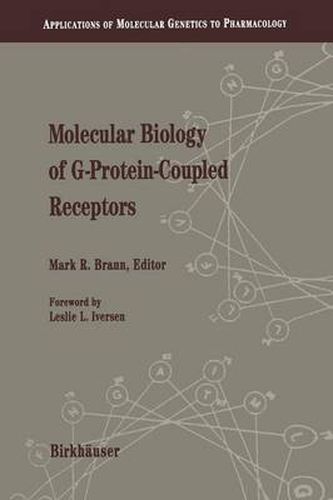Readings Newsletter
Become a Readings Member to make your shopping experience even easier.
Sign in or sign up for free!
You’re not far away from qualifying for FREE standard shipping within Australia
You’ve qualified for FREE standard shipping within Australia
The cart is loading…






This title is printed to order. This book may have been self-published. If so, we cannot guarantee the quality of the content. In the main most books will have gone through the editing process however some may not. We therefore suggest that you be aware of this before ordering this book. If in doubt check either the author or publisher’s details as we are unable to accept any returns unless they are faulty. Please contact us if you have any questions.
LESLIE L. IVERSEN The present series of volumes is well timed, as the impact of molecular genetics on pharmacology has been profound, and a comprehensive review of the rapid advances of the past decade is much needed. Since the pioneering work of Dale, Ariens, and others in the early years of this century, much of pharmacology has been founded on the concept of receptors. To begin with, the receptor was conceived of as a black box, which recognized and transduced the biological effects of neurotransmit ters, hormones, or other biological messengers-and which could also represent a target for man-made drugs. It is only in the last two decades that molecular pharmacology has blossomed, first with the advent of radioligand binding techniques and second messenger studies which greatly facilitated the biochemical study of drug-receptor interactions, and latterly with increasing knowledge of the molecular architecture of the receptor proteins themselves. This started with the traditional biochemical approach of isolating and purifying the receptor molecules. This proved to be a task of immense technical difficulty because of the low density of receptors in most biological source tissues, although there were some notable successes, e. g. , the purification of the nicotinic acetylcholine receptor from the electric organ of Torpedo. It was the ap plication of molecular genetics technology during the 1980s, however, which really accelerated progress in this field.
$9.00 standard shipping within Australia
FREE standard shipping within Australia for orders over $100.00
Express & International shipping calculated at checkout
This title is printed to order. This book may have been self-published. If so, we cannot guarantee the quality of the content. In the main most books will have gone through the editing process however some may not. We therefore suggest that you be aware of this before ordering this book. If in doubt check either the author or publisher’s details as we are unable to accept any returns unless they are faulty. Please contact us if you have any questions.
LESLIE L. IVERSEN The present series of volumes is well timed, as the impact of molecular genetics on pharmacology has been profound, and a comprehensive review of the rapid advances of the past decade is much needed. Since the pioneering work of Dale, Ariens, and others in the early years of this century, much of pharmacology has been founded on the concept of receptors. To begin with, the receptor was conceived of as a black box, which recognized and transduced the biological effects of neurotransmit ters, hormones, or other biological messengers-and which could also represent a target for man-made drugs. It is only in the last two decades that molecular pharmacology has blossomed, first with the advent of radioligand binding techniques and second messenger studies which greatly facilitated the biochemical study of drug-receptor interactions, and latterly with increasing knowledge of the molecular architecture of the receptor proteins themselves. This started with the traditional biochemical approach of isolating and purifying the receptor molecules. This proved to be a task of immense technical difficulty because of the low density of receptors in most biological source tissues, although there were some notable successes, e. g. , the purification of the nicotinic acetylcholine receptor from the electric organ of Torpedo. It was the ap plication of molecular genetics technology during the 1980s, however, which really accelerated progress in this field.